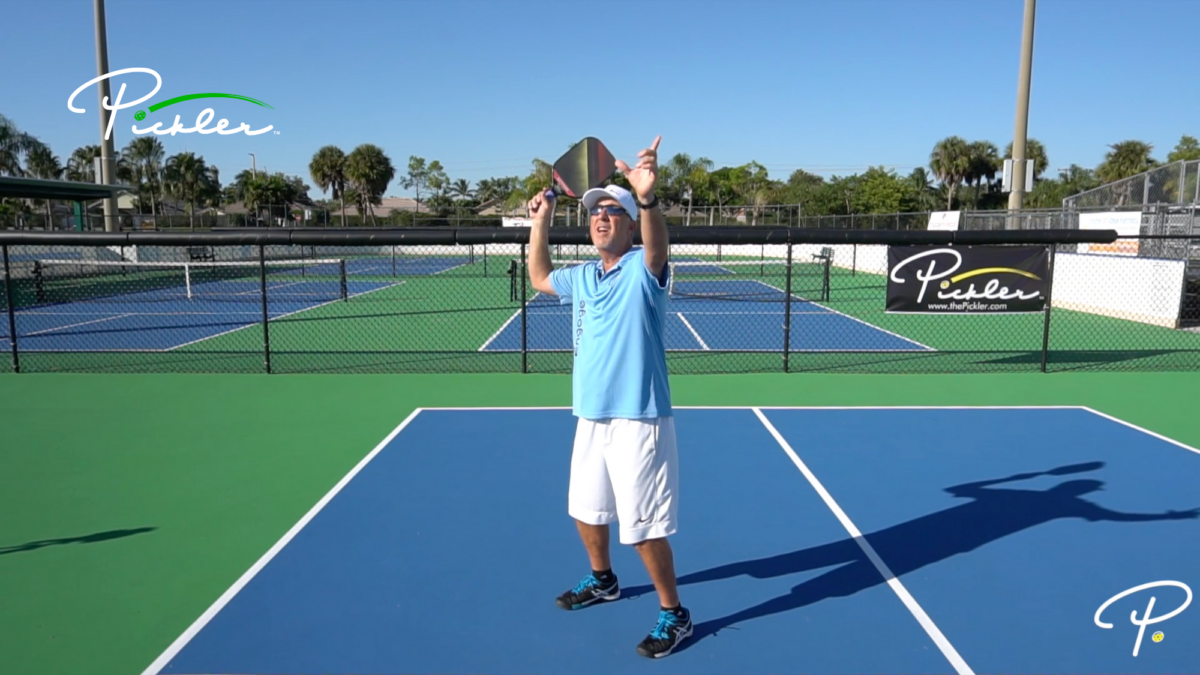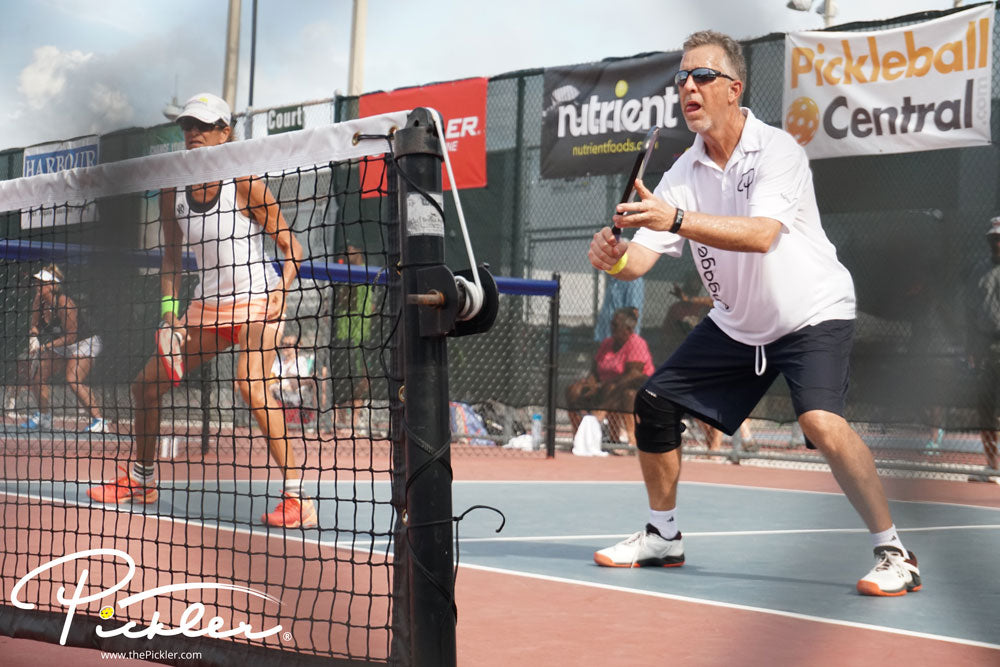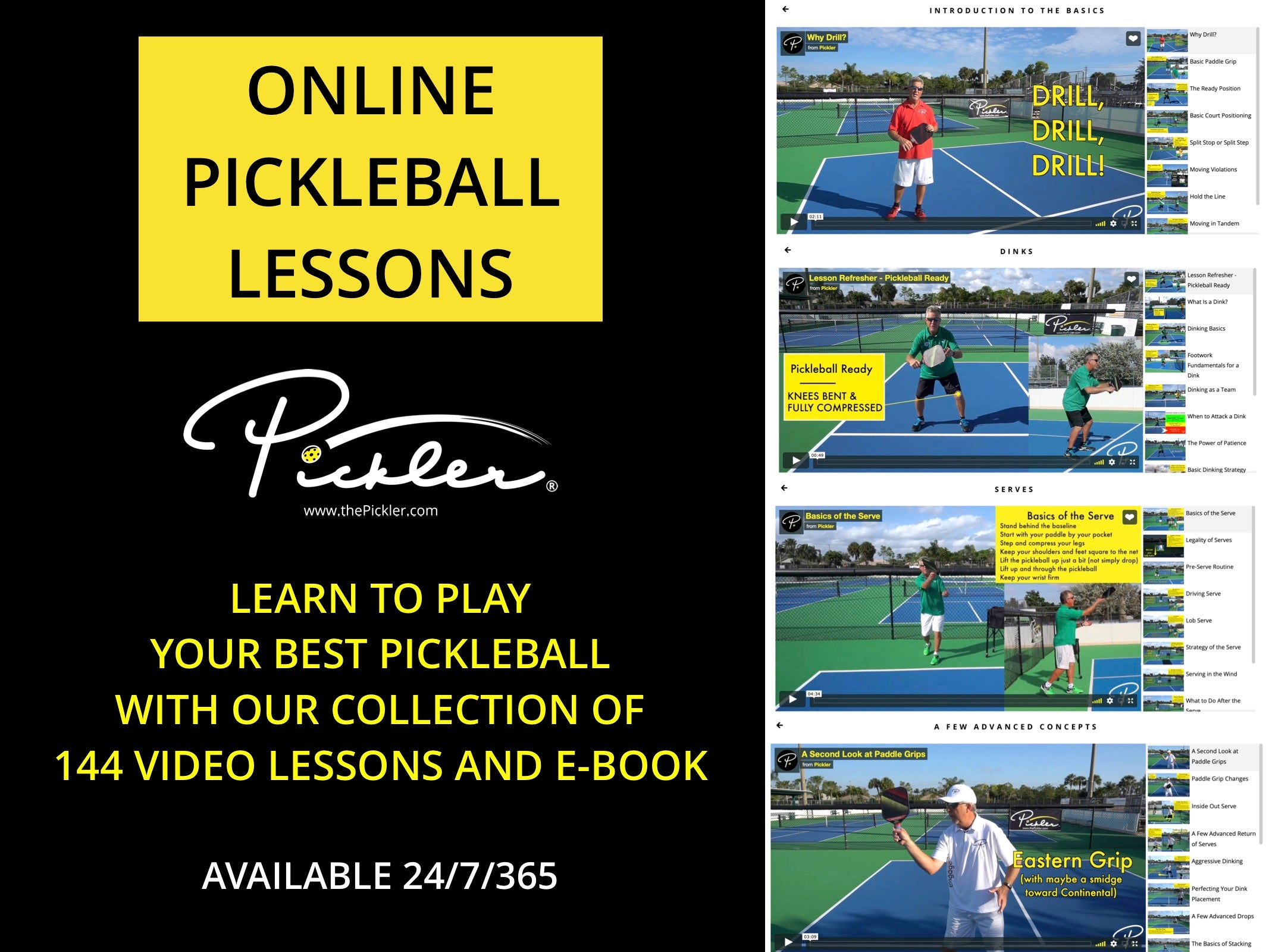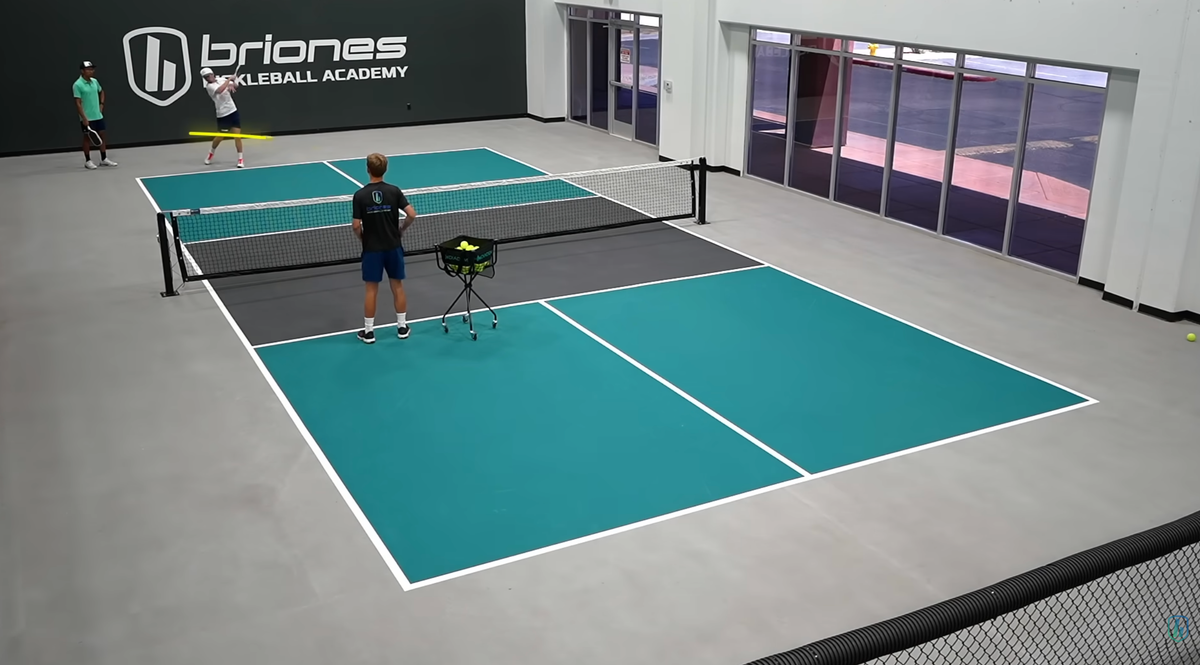Imagine that the pickleball sails into the air on a lob. You and your partner need to make a quick assessment: Will one of you strike the pickleball as an overhead, or strike the pickleball off the bounce?
When you do decide to take the overhead, proper execution is key. A strong overhead can change the momentum of a rally, but too many players give away easy points with simple mistakes. If you’re ready to transform your overhead from a missed opportunity into a game-winning weapon, start by fixing these four common errors:
1. Lack of Preparation = Lack of Power
It’s important to recognize when a lob is coming your way and immediately prepare to hit the overhead. This means:
- Have your paddle up and ready
- Point with your non-paddle hand to track the ball
- Rotate your upper body
- Shuffle (not cross!) your feet to get in position
Many players wait too long to start moving or get flat-footed under the ball. The earlier you prepare, the better your balance and contact point will be and the more likely you are to crush the overhead.

2. Letting the Ball Drop Too Low
Don’t make the mistake of watching the pickleball drop below your ideal contact point. The best overheads are made with full extension from your paddle to your shoulder and waist. If the ball is dropping on you, don’t just reach down with your paddle, bend your knees and stay extended.
Think: high contact, full stretch, and explode upward through the shot.
3. Dropping Your Head Too Soon
Eyes on the ball isn’t just advice, it’s essential. If you let your head drop before making contact, your paddle and shoulders are likely to follow. That usually results in the pickleball going straight into the net.
Instead, track the ball all the way to contact, keeping your eyes up and your chest open. The better you see it, the better you’ll hit it.
4. Overplaying the Overhead
One of the biggest mistakes players make is overplaying shots, especially overheads. The instinct to crush the ball as hard as possible is strong, but it often leads to errors or out balls.
Instead, focus on placement and consistency. A well-placed overhead can win the point just as easily or at least force your opponents into a defensive position. Controlled aggression is the name of the game.

Quick Recap: Overhead Essentials
- Prepare early with proper mechanics and footwork
- Hit the pickleball at full extension—bend your knees if needed
- Keep your head and eyes up through contact
- Focus on smart placement, not just power
Mastering the overhead isn’t about how hard you swing, it’s about how well you prepare, position, and execute. Eliminate these common mistakes, and you’ll start turning high balls into easy winners.
WANT MORE PICKLEBALL TIPS AND STRATEGIES?
For more on avoiding critical mistakes in your pickleball game, check out The Pickler’s Blog, “Avoid These Common Pickleball Mistakes to Master the Transition Area.”

Plus, if you want more pickleball tips and strategies on every aspect of your pickleball game, check out Pickler’s online video lesson collection called My Pro Pickleball Coach. My Pro Pickleball Coach is a fraction of the price of one clinic or even one lesson, and features over 140 video lessons (over 7 hours of instruction!), as well as a corresponding e-book. These online video lessons are available on demand 24/7 and breakdown every aspect of the sport of pickleball, including pickleball drills, strategy, and advanced concepts, so you will play your best pickleball.

Anuncie Aqui / Advertise Here
Sua marca para o mundo Pickleball! / Your brand for the Pickleball world!

 English
English  Spanish
Spanish  Portuguese
Portuguese  German
German  Italian
Italian  Japanese
Japanese  French
French  Polish
Polish  Russian
Russian  Netherlands
Netherlands  Hungarian
Hungarian  Turkish
Turkish  Videos
Videos  The Pickler
The Pickler








 English (US) ·
English (US) ·  Portuguese (BR) ·
Portuguese (BR) ·